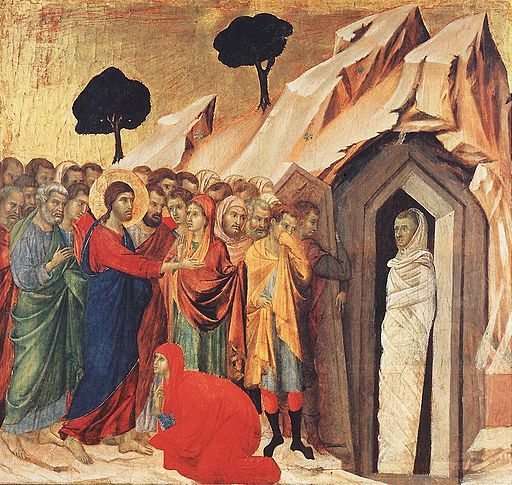This post was originally published on this site
As we have seen, the first two callings of “come and see” are both directed toward a new disciple. First, to come and see the place where Christ dwells and then to come and see for oneself who He really is. The third “come and see,” however, is different.
As Jesus nears His own crucifixion, His friend Lazarus dies and is laid in a stone tomb. Lazarus’ sisters come to Him, weeping over the death of their brother. They doubt that His presence will do any good at this point because Lazarus has been dead four days and the sweet smell of the spices that were used to anoint his body have worn off revealing the real stench of death. They weep at His feet and reprimand Him for not coming sooner.
Jesus seemingly remains unconcerned as he gets nearer to the tomb, continually reminding Mary and Martha of who He is.
Finally, He asks them, “Where have you laid him?” and they respond, “Lord, come and see.”
The third “come and see” of the gospels is an invitation for the Lord to come and see the wages of sin, to confront the death and corruption that plagues humanity–that plagues each of us.
It is an invitation we must extend to Jesus knowing that we are Lazarus, dead four days and stinking from our own sins within the stone tomb of our harden hearts. Experience (the first come and see) and knowledge (the second) of Christ are gifts of grace, freely offered by Him to those who will receive Him.
What is required of us is to respond.
And we respond by asking Jesus to come and see the sins that bind us like Lazarus in the grave no matter how foul we may think they have become. What is asked of us is that we weep bitterly, like Mary at her brother’s tomb, over the death that is within us.

Image from Wikimedia Commons
When they reach the tomb, Jesus, confronted with the death of His friend and the end result of humanity’s fallen state, joins Mary in her lament. And then, incredibly and in spite of the doubts and disgust of the crowd, He asked for the tomb to be opened, and He calls the rotting Lazarus out of the tomb and into Life.
So too it is with our hearts when we truly and honestly invite Jesus to come and see what lies within. He takes away the stony hardness of our hearts, and He does not flinch at the stench of the dead man who lies therein. Instead, He weeps with us, His own heart breaking to know what tragedies we suffer at our own hands, and then He calls forth the real man saying, “Loose him, and let him go,” freeing us from the grave clothes of our the sins which bind us and offering to us True Life in Him.




